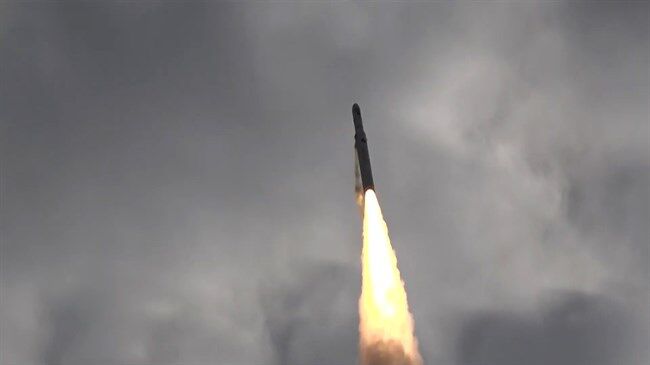ID :
646697
Mon, 11/07/2022 - 14:10
Auther :
Shortlink :
https://www.oananews.org//node/646697
The shortlink copeid
Iran’s missile achievements at a glance

Tehran, IRNA – According to Iran’s Defense Minister Brigadier General Mohammad Reza Ashtiani creativity and innovation in the complex process of construction management, improvement of operational capacity and combat readiness, self-reliance and breaking of dependency, reduction of industrial sabotage in terms of technologies localization, and currency and economic savings are among the strategic achievements of these scientific and technological activities.
Every country in the world that wants to be independent must have the ability to defend its national wealth, capital, and achievements, and today, Islamic Iran, with the efforts of scientists and experts in the country's defense industry, especially the strategic aerospace organization, and on the occasion of the anniversary of the organization’s establishment, while achieving tremendous and significant progress in research, production, and development of innovative technologies, has unveiled the production line of Sayad B category of surface-to-air missiles.
Fortunately, my colleagues in the Department of Defense and The Islamic Republic of Iran Air defense managed to improve the Bavar 373 system, which was already in the process of upgrading, in various aspects of radar and missile capabilities and started its production line. The construction of this system started in 2019 and great achievements were achieved at each stage, and in terms of air defense security, improving its operational efficiency according to the level of threats was continuously put on the agenda.
Sayad B-4 missile, which targets long-range stationary targets, is placed in the ranks of the best in the world, which are very limited, and can identify, intercept and destroy air targets at long distances.
Sayad B-4 gives a new ability to the Air Defense Force to deal with ballistic missiles, and it has an effective application as a hunter against reconnaissance aircrafts such as AWACS which can disrupt defense systems and guide and command operations aimed at destroying targets in the strategic depth of the country.
These achievements are very important and strategic for the armed forces, especially the Khatam al-Anbia air defense base, because this system improves the defense power and deterrence level and enables the defense of sensitive and vital centers in the strategic depth of the country.
In a related development, a defense affairs expert Mohammad Shaltooki said that since the start of Iran’s space project in the 2000s, the issues of carrier rockets and launch reliability have always posed bottlenecks and problems to their smooth implementation.
This was due to the failure of the available carrier rockets in the country to be reliable enough for launching satellites into orbit successfully.
However, since the Qaem 100 satellite carrier runs on solid propellant, it guarantees launch reliability to a much greater extent. In fact, from now on, Iran will be able to put its satellites into orbit with greater ease of mind and a higher rate of success, using the launch vehicle.
This means that the era of unsuccessful launches have almost come to an end for the country.
In general, the Qaem 100 carrier has helped remove the Achilles’ heel of Iran’s space program and the bottleneck that used to cause problems in the launch process. The new achievement will provide the country with the possibility of launching one satellite into orbit per month.
Meanwhile, Mehdi Bakhtiari, a defense affairs expert believes that the vision developed for Iran’s space program is putting satellites into the geostationary orbit, i.e., at an altitude of 36,000 kilometers above Earth's equator.
To achieve the goal, firstly, the country is required to gain access to lower orbits, namely the LEO and MEO.
What Iran has achieved so far is putting satellites into the LEO orbit, 500 kilometers above the Earth’s surface. Many of the world’s satellites have been put into the same orbit. Previously, on the back of the Iranian Defense Ministry’s satellites, Simorgh and Zoljanah, the country sought to gain access to this orbit.
The IRGC’s Qased carrier rocket had earlier placed two homegrown satellites of Noor 1 and Noor 2 into orbit, each weighing about 20 kilograms. Qaem 100, however, is expected to put into orbit the domestically-developed Nahid satellite with a weight of 80 kilograms in the near future.
Follow us on Twitter @IrnaEnglish





